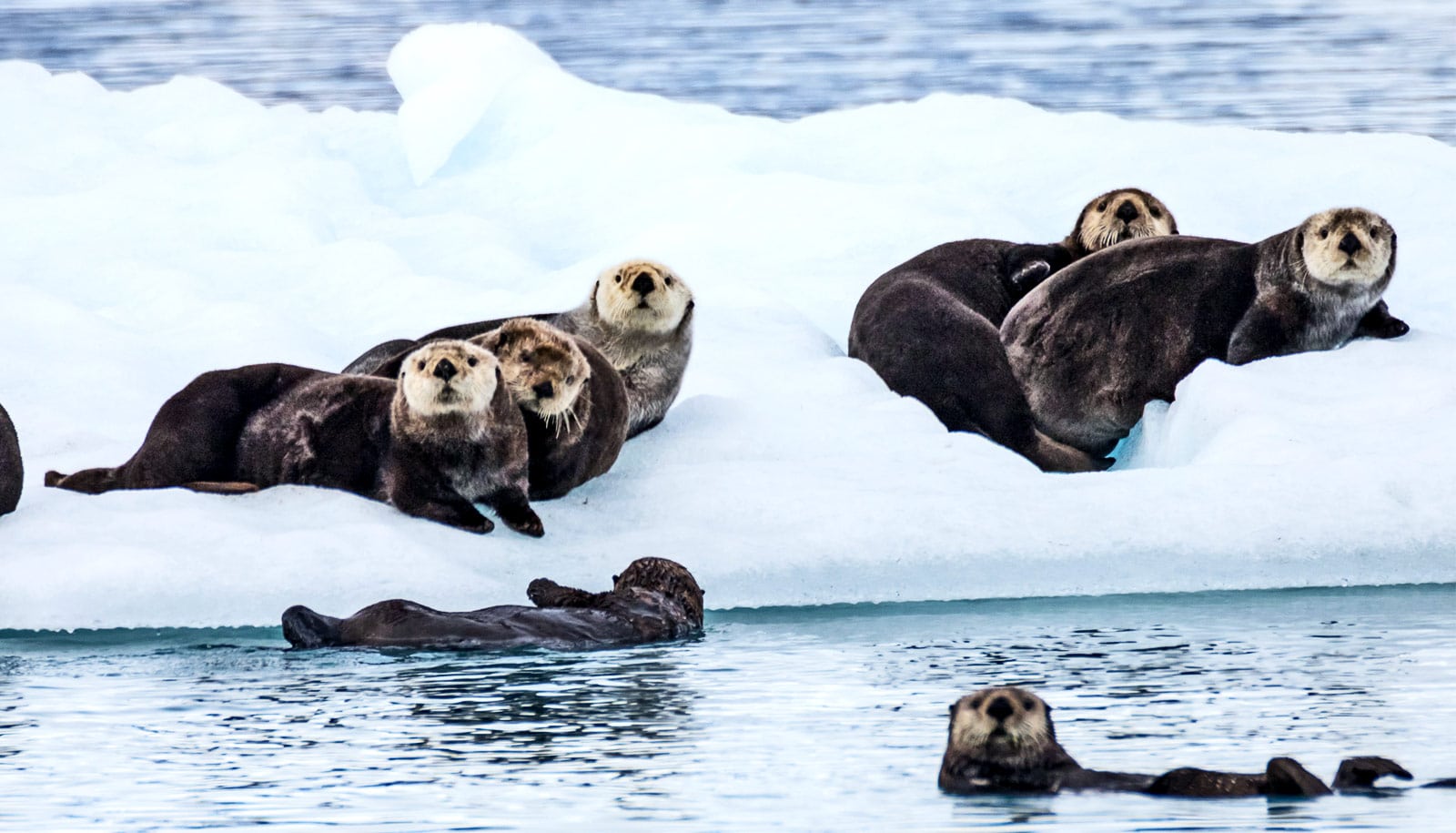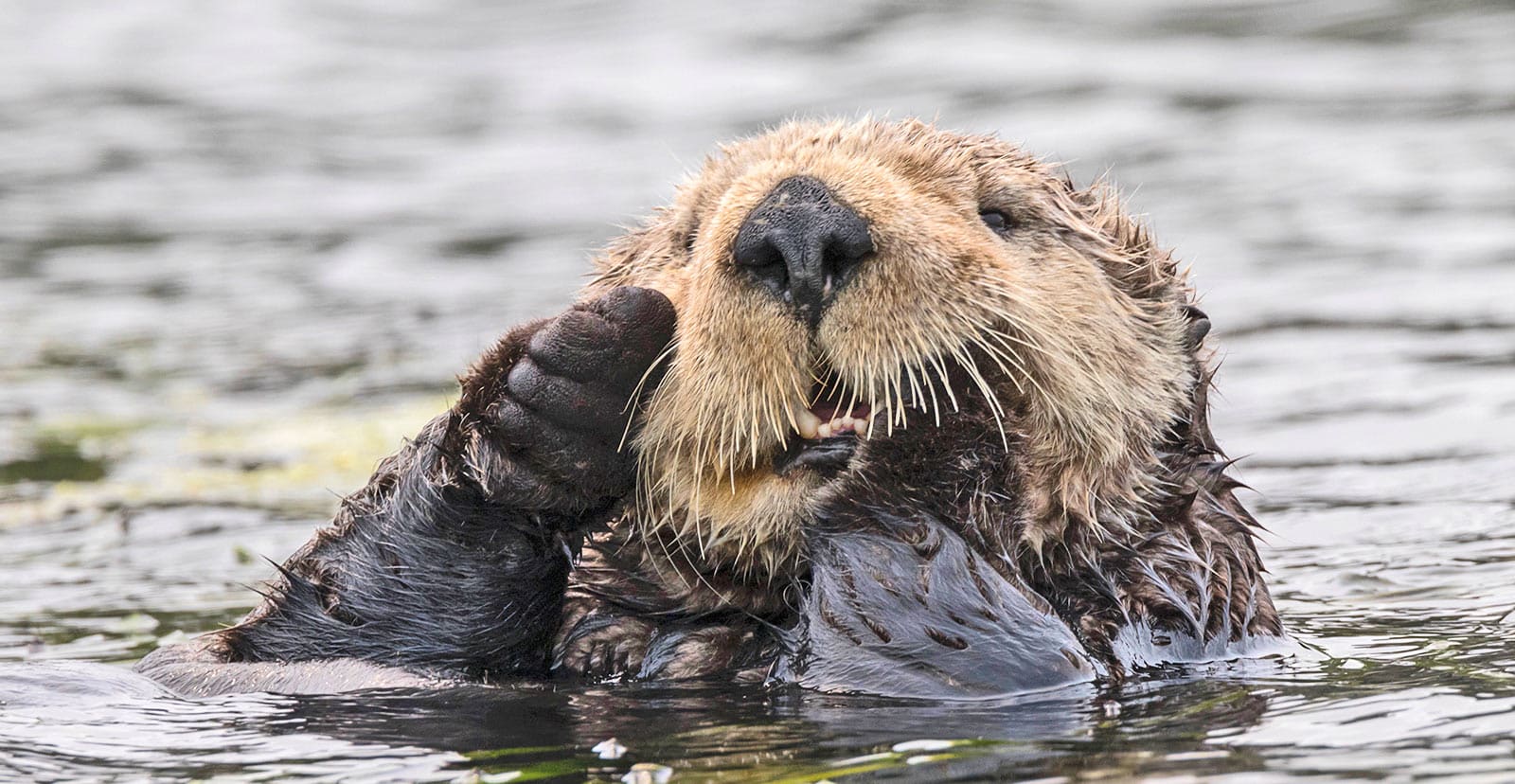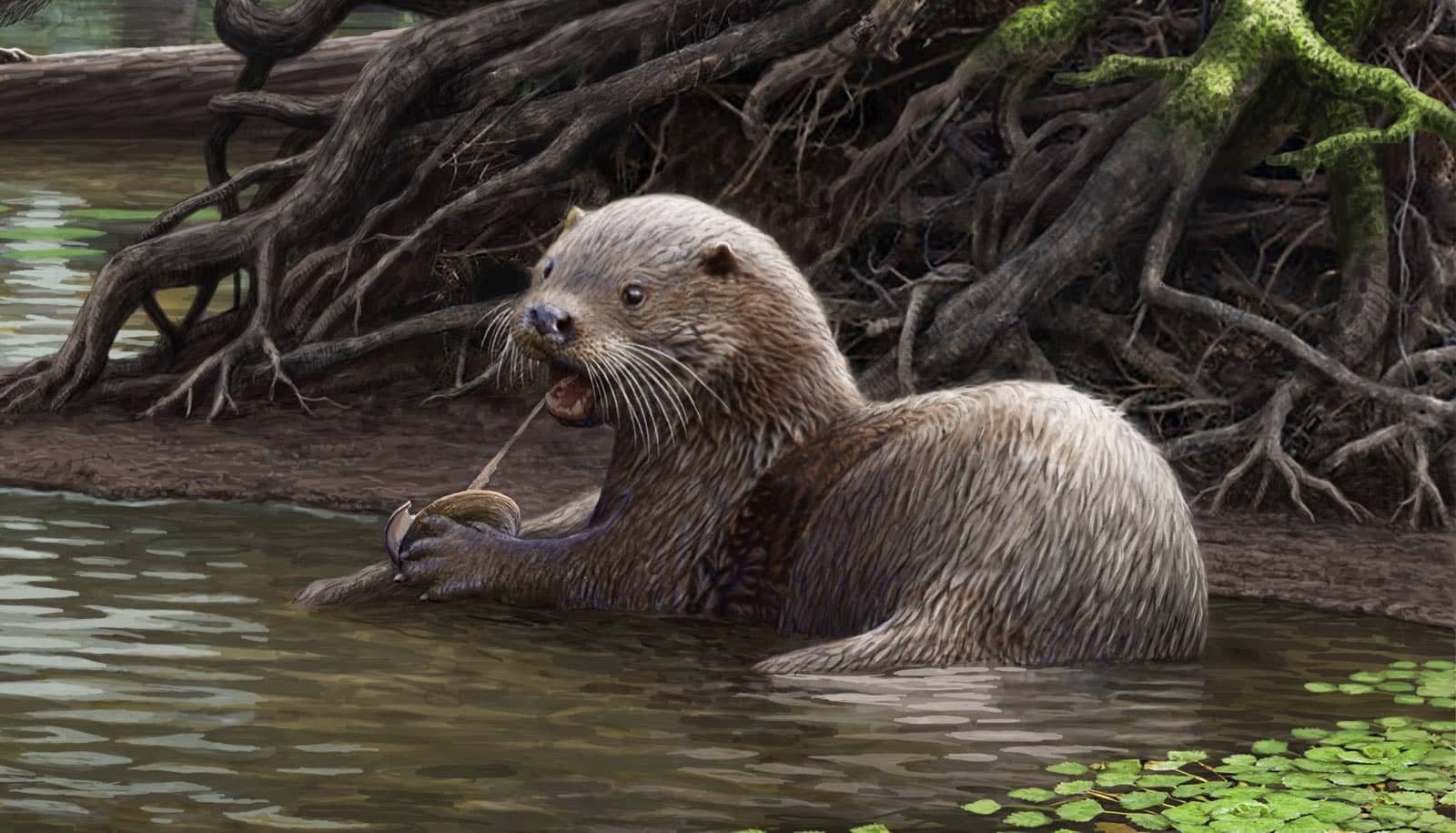Before fur traders decimated sea otter populations from Alaska to Oregon, ancestors of at least one Alaskan indigenous population, the Tlingit, hunted the mammals for their pelts but probably not for food, according to a new study.
The findings could help Alaskans confront growing numbers of the mammals and Oregonians who want to reintroduce them on the coast.
“Hunting sea otters and using sea otter skins has been a Tlingit and Haida cultural tradition for thousands of years…”
The research in American Antiquity takes on questions about traditional use by native populations amid calls to expand harvesting. Since their reintroduction in the 1960s, the population of sea otters has spiraled.
Only Alaska Natives living along the coast are permitted under federal law to hunt sea otters for subsistence and with little waste. They use the pelts for clothing, bedding, hats, and other regalia.
Some environmentalists have challenged the right of Alaska Natives to hunt sea otters without eating their meat. Conservationists want to show that native populations regularly did so as part of their case for allowing larger-scale harvesting for consumption.
The idea comes amid rising tensions. Sea otters have altered ecosystems, making it more difficult for commercial fisherman to catch abalone, clams, Dungeness crabs, red sea urchins, and other invertebrates the otters consume. From 1996 to 2005, the industry was reported to have experienced an economic loss of $11.2 million.
Thousands of years of tradition
The research, however, speaks only for Tlingit ancestors.
Numerous indigenous populations from Alaska to California hunted sea otters for thousands of years, says Madonna Moss, a professor in the anthropology department at the University of Oregon and curator of zooarchaeology at the Museum of Natural and Cultural History at the University of Oregon.
As sea otters recolonize their historic range through population growth or additional reintroduction, such as along the Oregon coast where the mammals are rarely seen, she says, finding out whether other native populations ate sea otter meat is worthy of attention.
“Hunting sea otters and using sea otter skins has been a Tlingit and Haida cultural tradition for thousands of years,” says Moss. “If sea otters are reintroduced elsewhere on the Pacific Coast, or their numbers steadily increase on their own, First Nations, Native Americans, and Alaska Natives should be involved in planning and decision-making and given priority in terms of resource rights.”
Moss examined 461 sea otter and 195 seal specimens found among 940 bones previously collected at two of 16 southeast Alaska sites. Moss examined them for telltale signatures of human modifications that result from using sea otters for different purposes. Indigenous peoples have been using sea otters for at least 10,000 years.
Working with the Sealaska Heritage Institute, Moss also observed the process of skinning the otters for pelts and butchering by today’s Tlingit, and she interviewed tribe members about their understanding of ancient practices from before sea otters went extinct. She found little evidence of human consumption but some for the Tlingit dogs eating otter meat.
Moss excavated the two sites in the 1980s when she was studying fish and shellfish remains as part of her research on subsistence economies of the Angoon Tlingit. While working on her dissertation she visited the University of California, Berkeley Museum, where she obtained a handwritten catalog earlier researchers made at the two sites. She had wanted to study the bones in the collection for years, she says.
“It was particularly gratifying to come up with a research question that allowed me to do that and be of interest to my Tlingit colleagues,” Moss says. “They have been genuinely interested in and supporting this research for several years. When I presented these results in Juneau at the Sealaska Heritage Institute this past summer, there was a large crowd of listeners, including people who said they would never eat sea otter, and others who liked the meat.”
Sea otter bones and DNA
Efforts to reintroduce sea otters to the Oregon coast failed in the 1970s, but amid fresh calls to try again, a current project could prove to be helpful. Sea otter sightings on the coast are rare and are thought to reflect temporary visits rather than residence.
Euro-American fur traders decimated sea otters. By 1911, the otters had disappeared from Oregon, says doctoral candidate Hannah Wellman. She is studying the historical ecology of sea otters and cetaceans—whales, dolphins, and porpoises—along the coast.
Wellman is exploring the past practices of the state’s indigenous populations by studying ancient DNA and cut marks on remains unearthed at two large archaeological sites near Seaside in the 1960s and ’70s. The remains are at the Smithsonian National Museum of Natural History and the University of Oregon’s Museum of Natural and Cultural History.
“The excavations unearthed a lot of material, and researchers like me are slowly working through analyzing the animal bone that was collected,” says Wellman, whose research Moss supervises. “The preservation was really exceptional.”
Researchers are comparing DNA from the Oregon sea otters to modern California otters, as well as sea otter remains dated from 1857 to 1983 from Russia, Alaska, British Columbia, and Washington.
Previous research, Wellman says, suggested that Oregon’s ancient otters were genetically linked with those in California, which may explain why Alaskan otters used in the 1970s’ effort failed. She is using a more robust DNA-sequencing technology in hopes of getting definitive results.
“The cut marks on the bones should give me a good idea of use patterns,” Wellman says. “We know from archaeology, tribal knowledge, oral histories, and ethnographies that sea otters were extremely important to indigenous groups along the Northwest Coast. I hope to provide a really specific insight into that use. Did they skin them for their pelts, eat the meat, or both?”
A return of sea otters could alter marine habitats and fisheries in Oregon, as has been the case in Alaska. The animal remains researchers are now studying can inform present-day ecological issues, says Wellman, who grew up near Boston and earned a bachelor’s degree from Tufts University.
“Our goal is to provide an additional source of deep-time data to wildlife managers and biologists as they debate reintroducing sea otters to Oregon,” she says. “We’ll be sharing our results with the Elakha Alliance, which is investigating the feasibility of reintroductions to Oregon, as well as the Oregon tribes.”
A predoctoral fellowship from the Smithsonian Institution, University of Oregon Graduate School travel awards, and departmental funds support Wellman’s research. Courtney Hofman from the University of Oklahoma also collaborated on the work.
Source: University of Oregon


